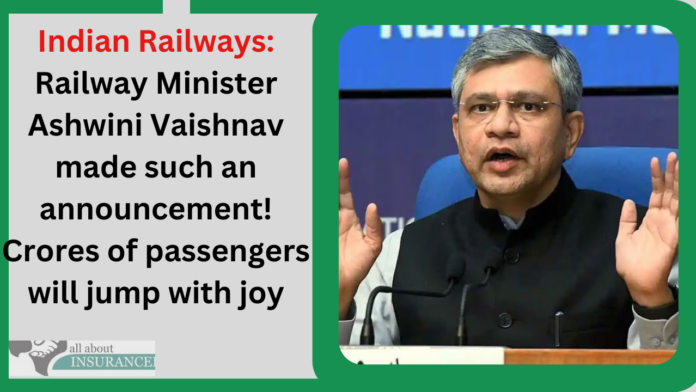Indian Railways Latest News: Railway Minister Ashwini Vaishnav has set a target of making Indian Railways a net zero carbon emitter by 2030. In a written reply in the Lok Sabha, the Railway Minister said that Railways has taken several initiatives to reduce its carbon emissions.
Railway Minister Ashwini Vaishnaw: Continuous work is being done in the Modi government to provide facilities to railway passengers. Be it the operation of semi-high speed trains or the beautification of railway stations, there are things that are making the train journey more popular among the passengers. Now Railway Minister Ashwini Vaishnav has set a target of making Indian Railways a net zero carbon emitter by 2030. In a written reply in the Lok Sabha, the Railway Minister said that Railways has taken several initiatives to reduce its carbon emissions.
Railways preparing three-phase electric locomotives
In an attempt to reduce carbon emissions, the use of efficient technology like complete switching over to prepare three-phase electric locomotives is an effort of the railways. Apart from this, use of Head on Generation HOG technology, use of LED lights in buildings and coaches, star rated equipment etc. are prominent. He also said that the strategies to achieve zero carbon emissions include procurement of electricity through renewable energy sources, transfer from diesel to electric traction to promote energy efficiency.
Energy requirement will be 8,200 MW
The Railway Minister said that in 2029-30, the energy requirement of Railways is expected to be around 8,200 MW. He said, to achieve net zero carbon emission, the expected requirement of renewable capacity by 2029-30 would be around 30 thousand MW. He said, as of last month, about 147 MW of solar plants, both on rooftops and on the ground, and about 103 MW of wind power plants have been commissioned.
The Railway Minister told that further agreement has been signed for renewable energy capacity of about 2150 MW. Apart from this, the minister said, the Railways has also planned to further procure renewable energy through various power purchase modes for its future energy requirements.

